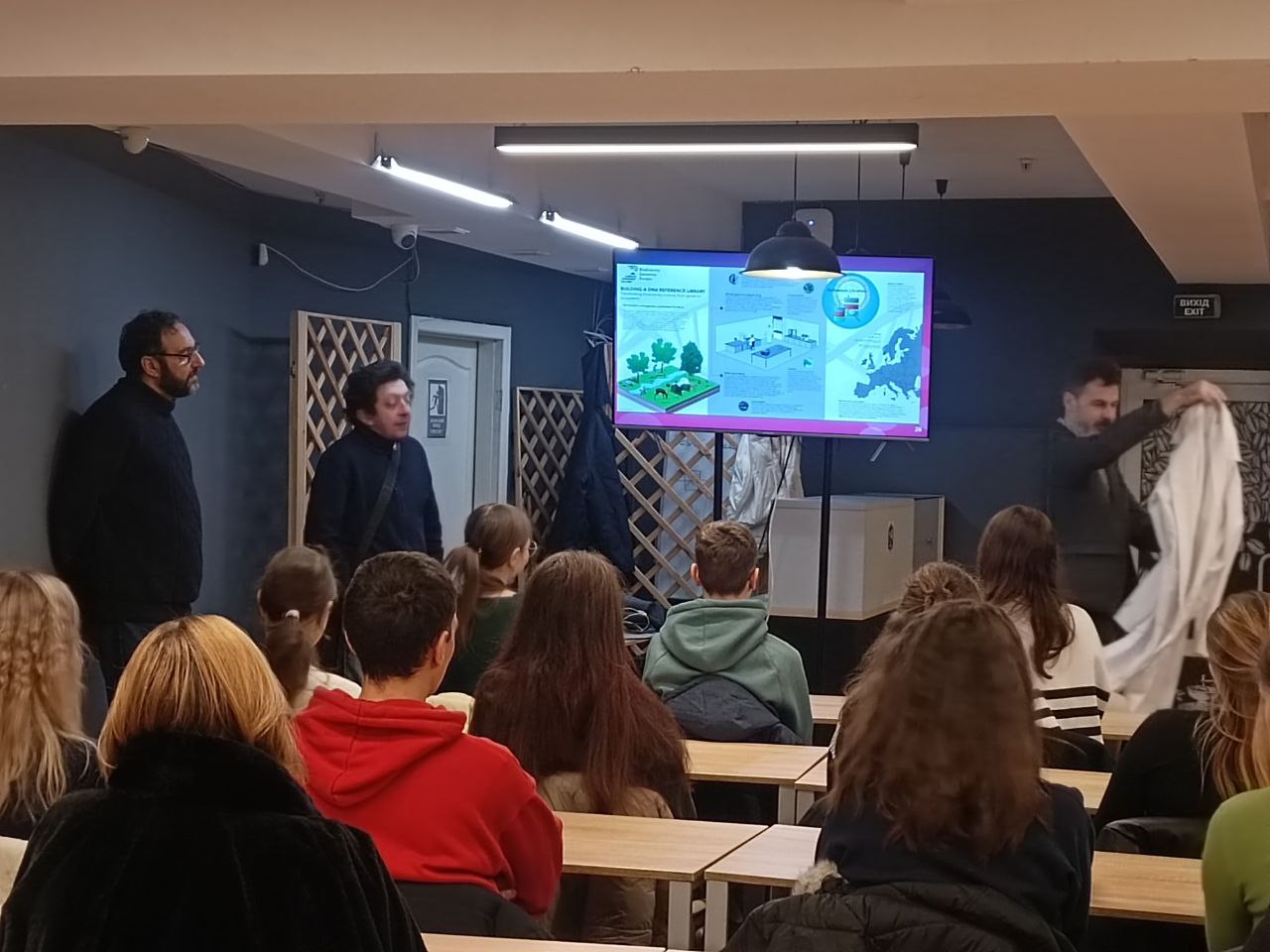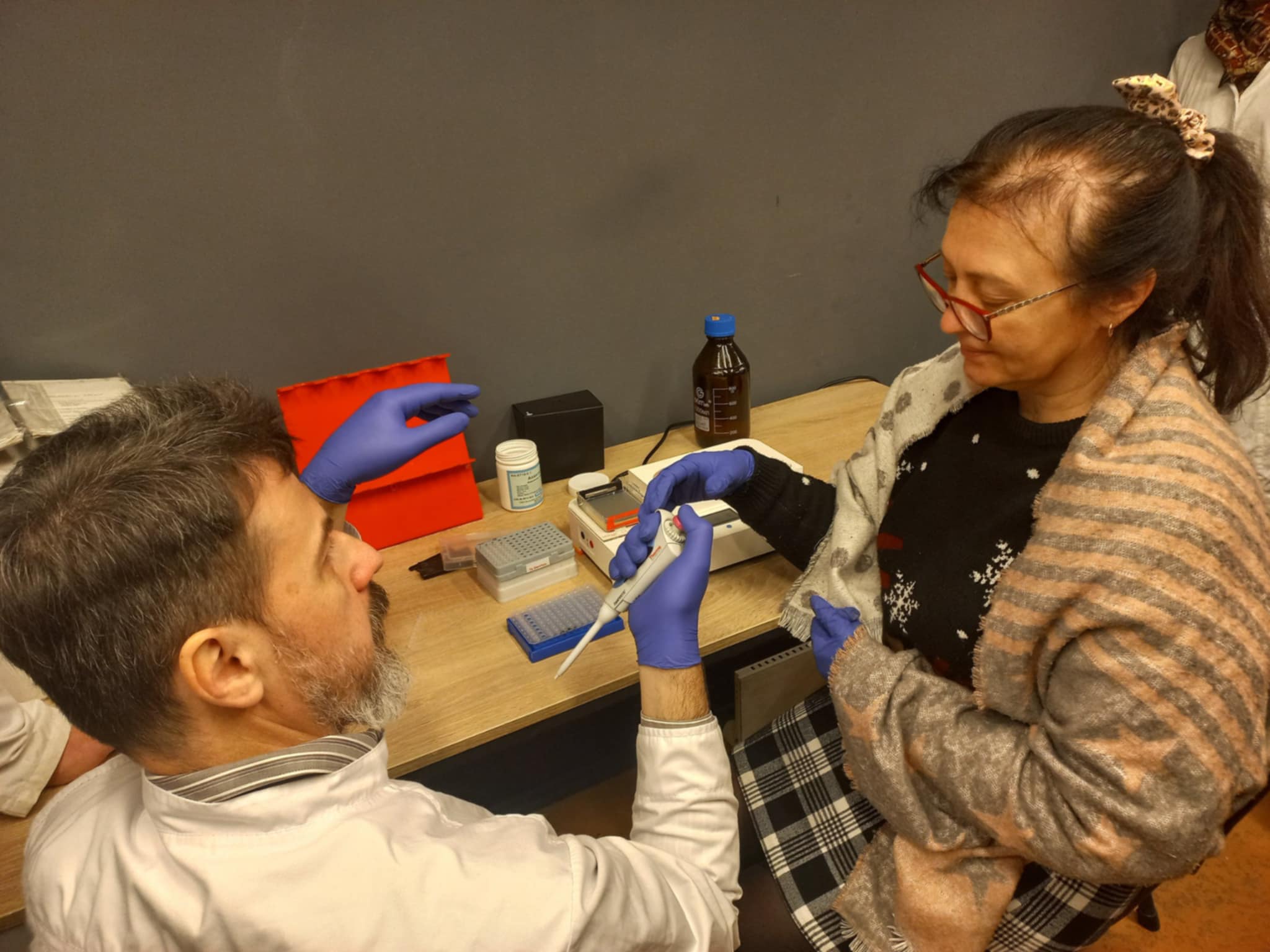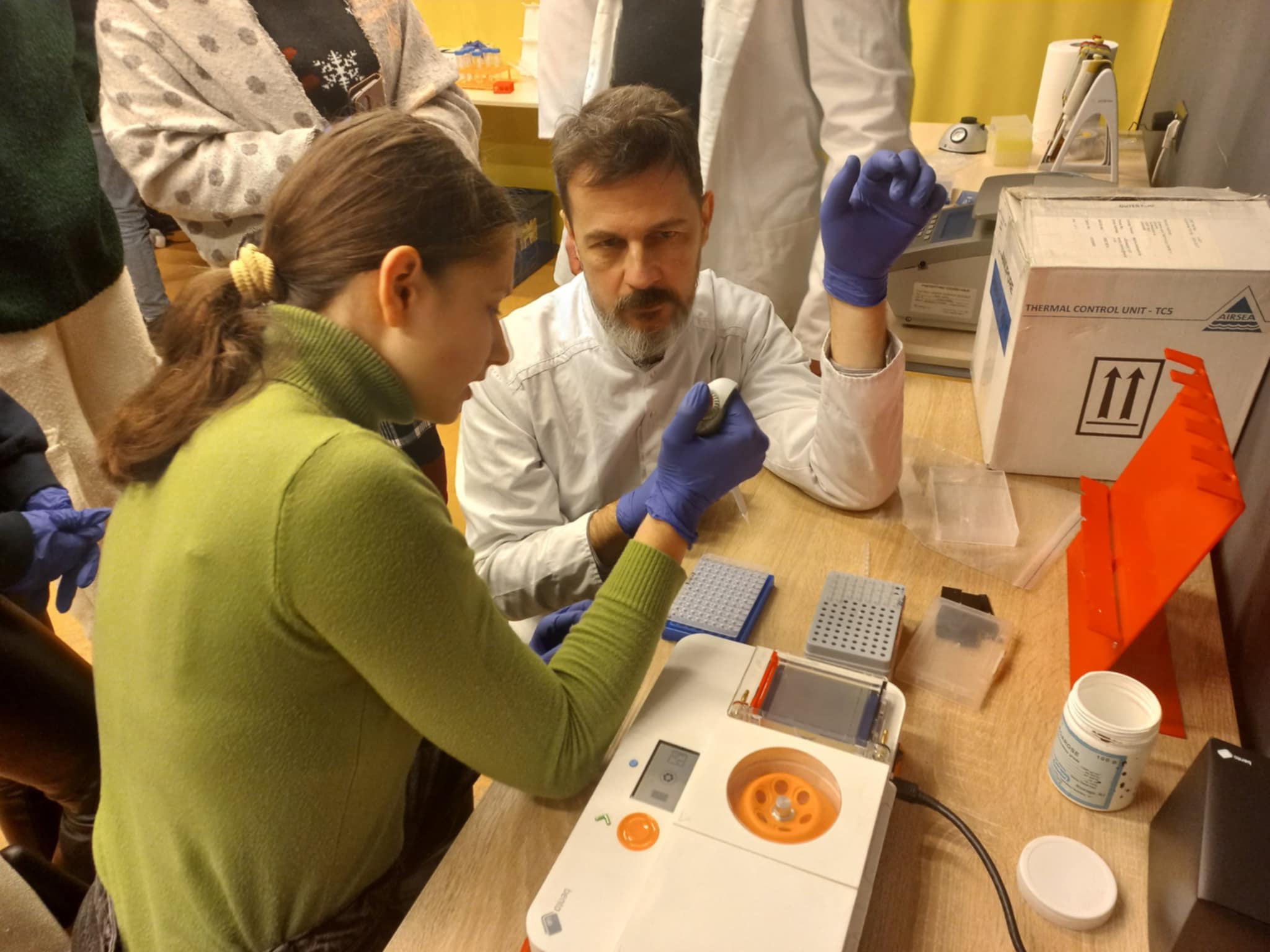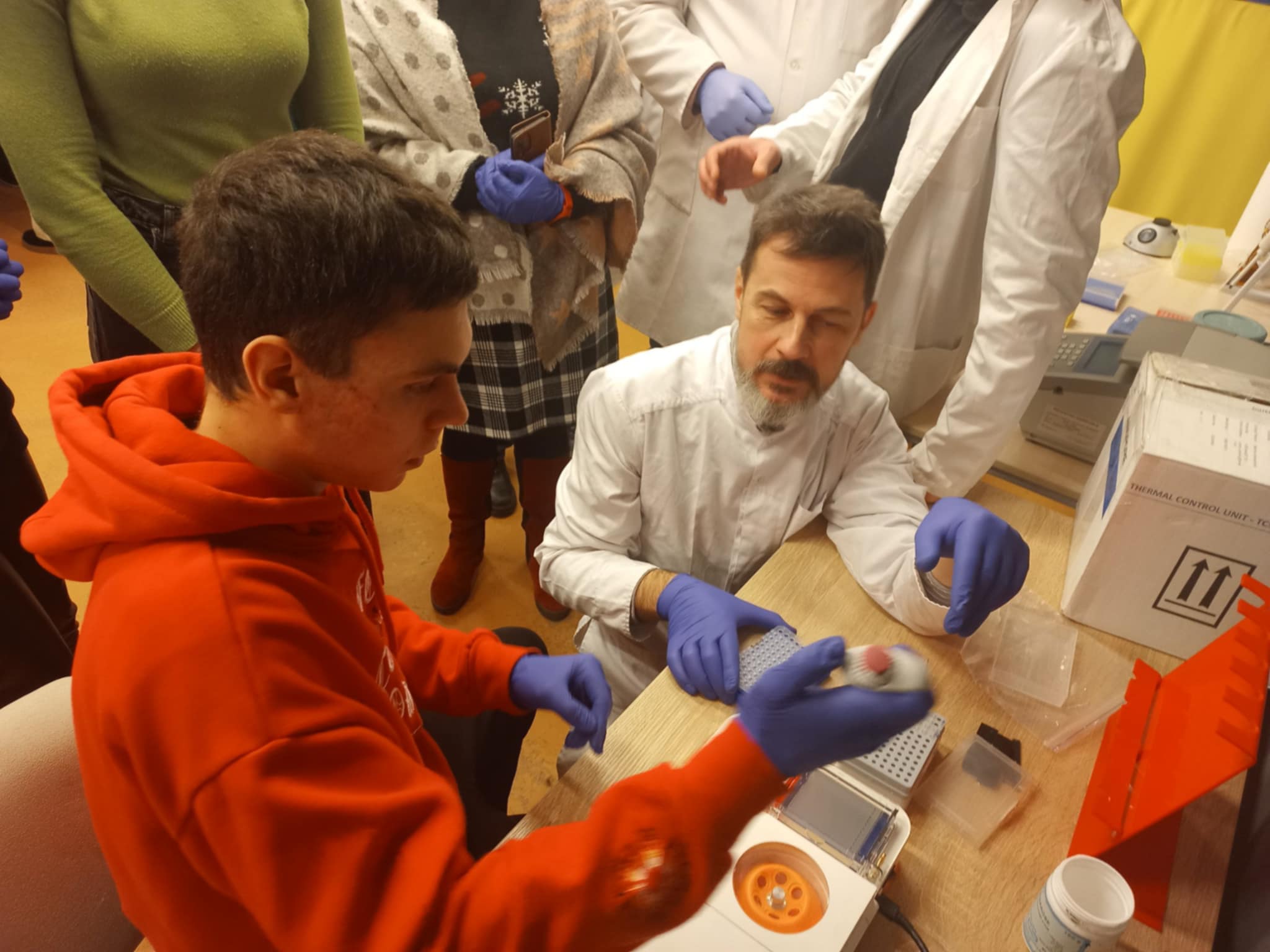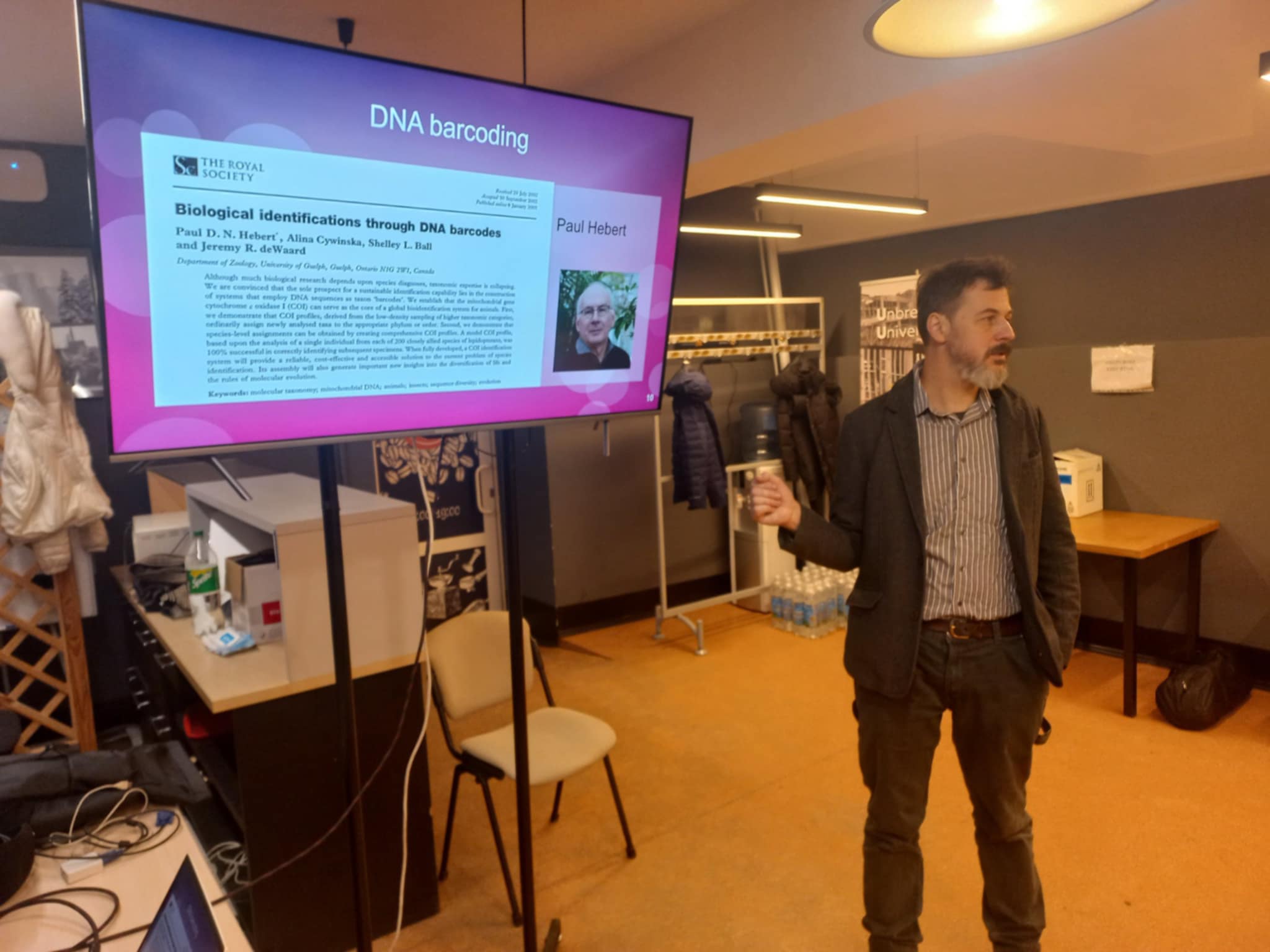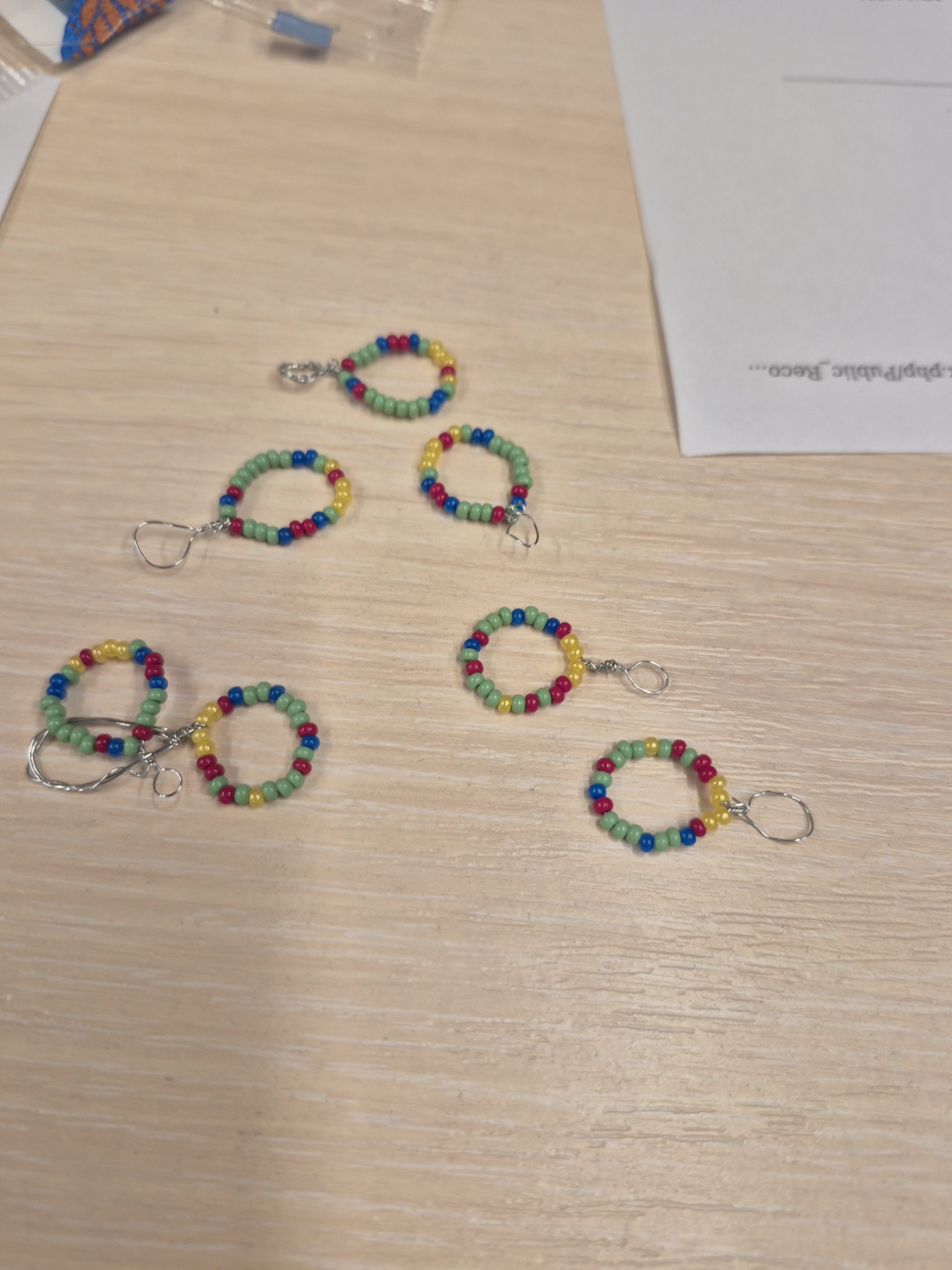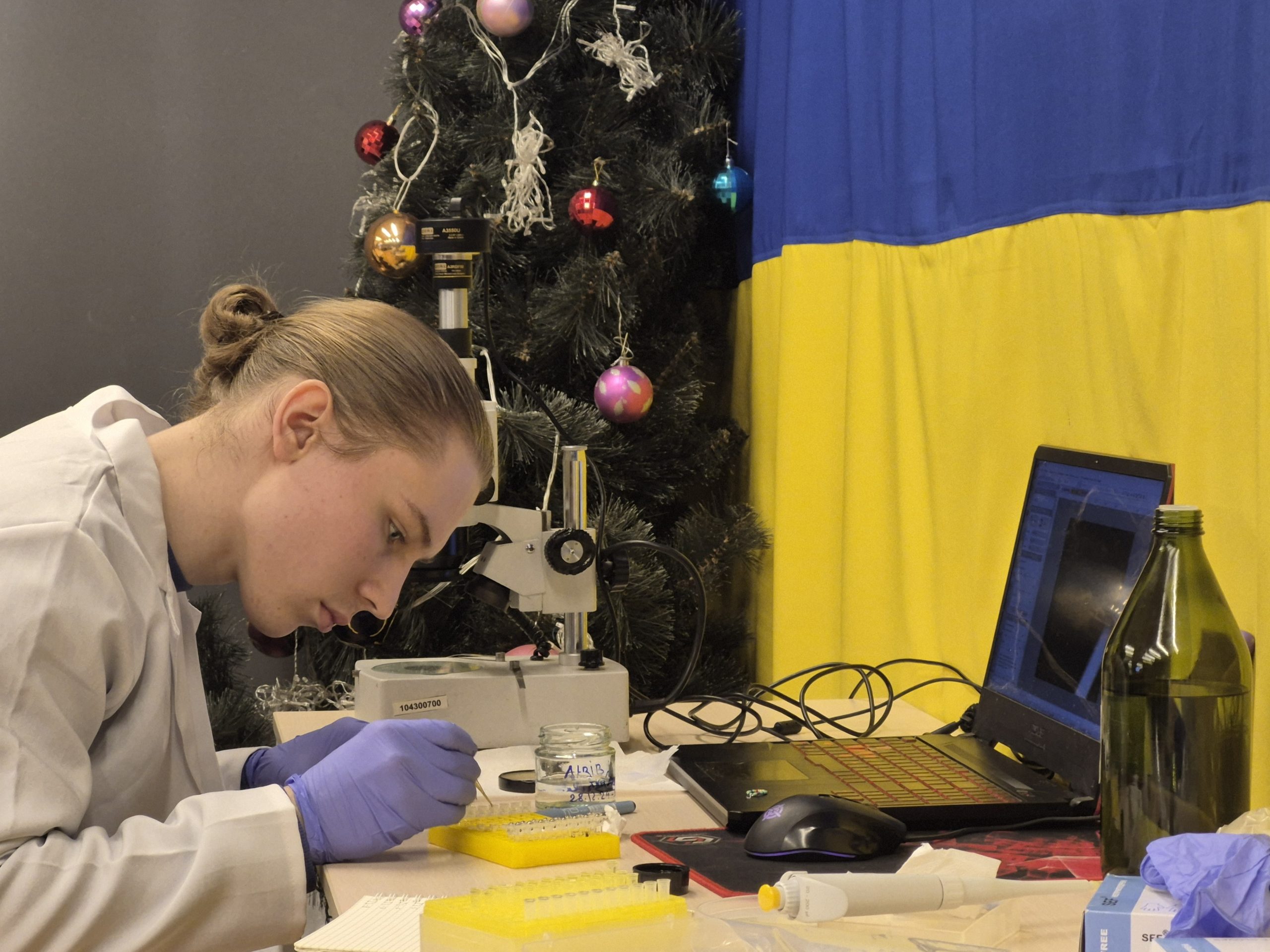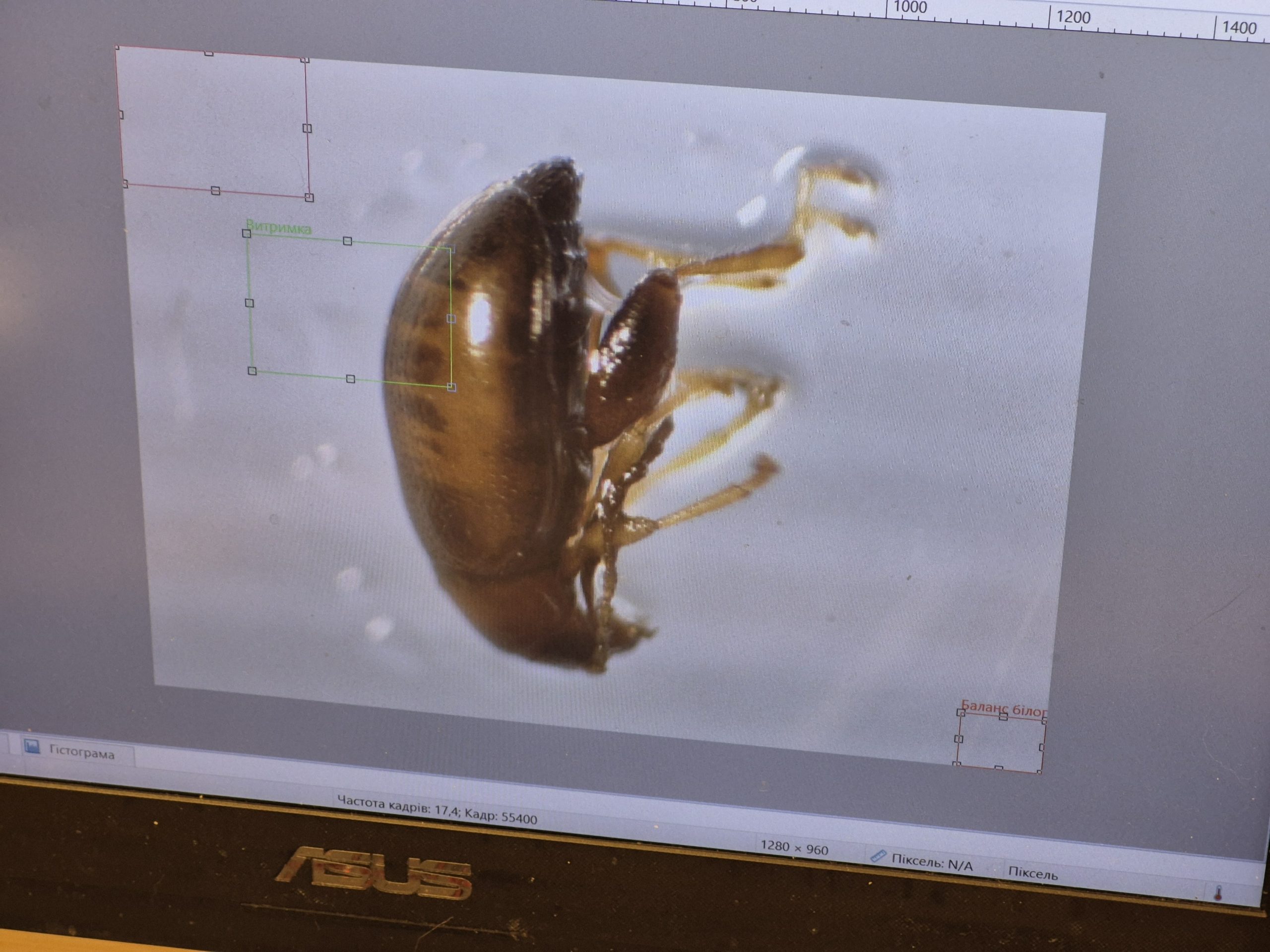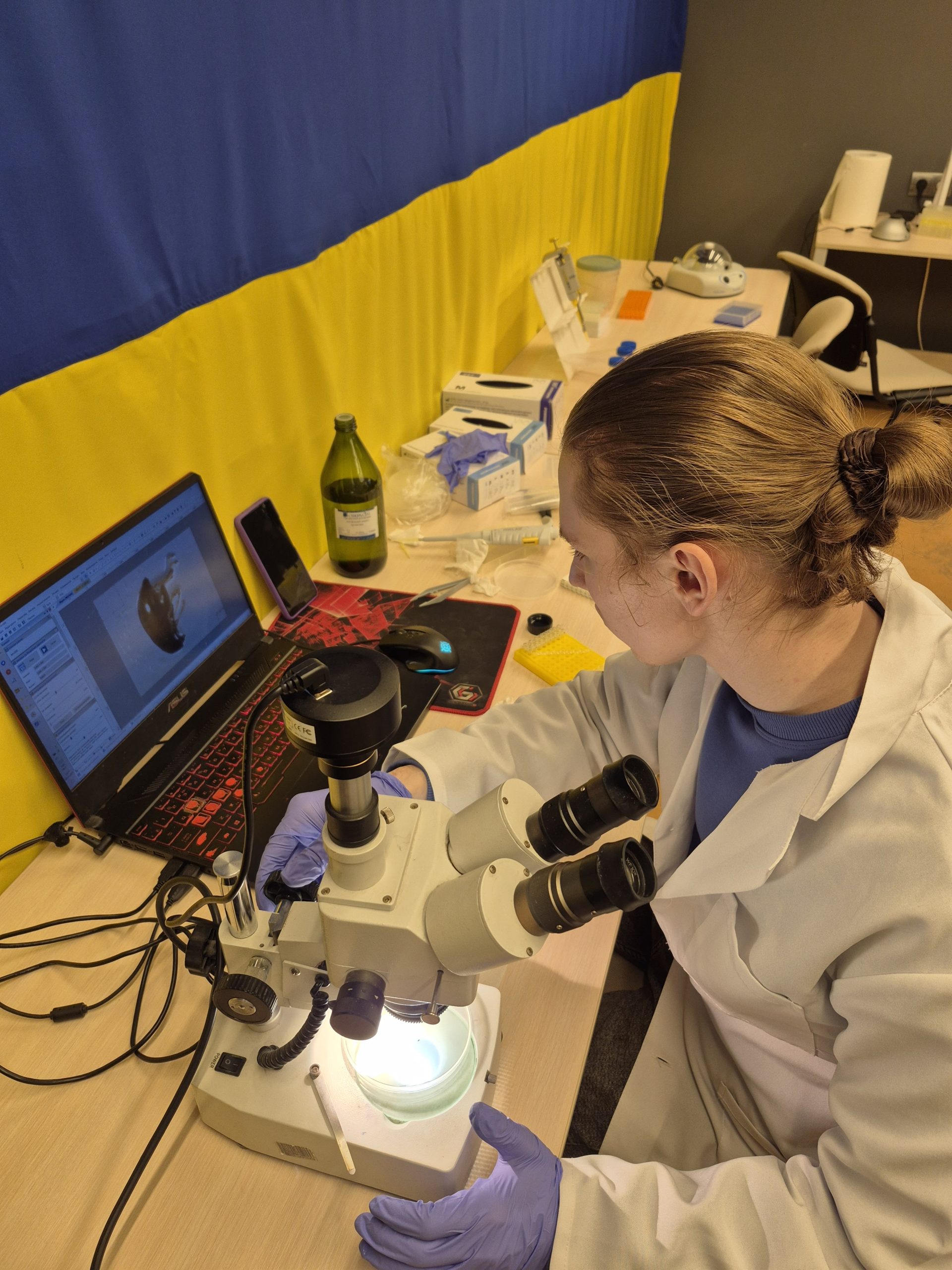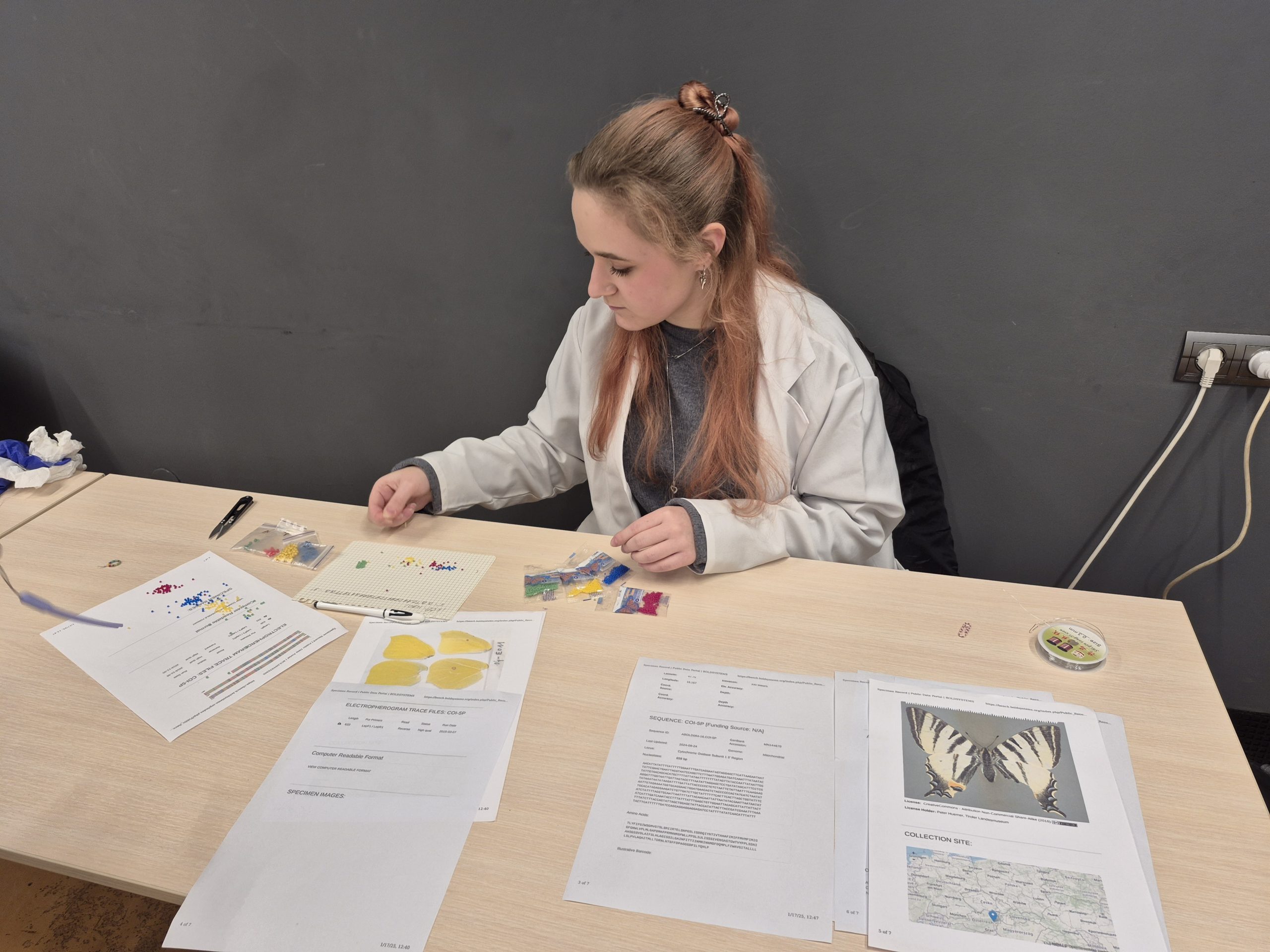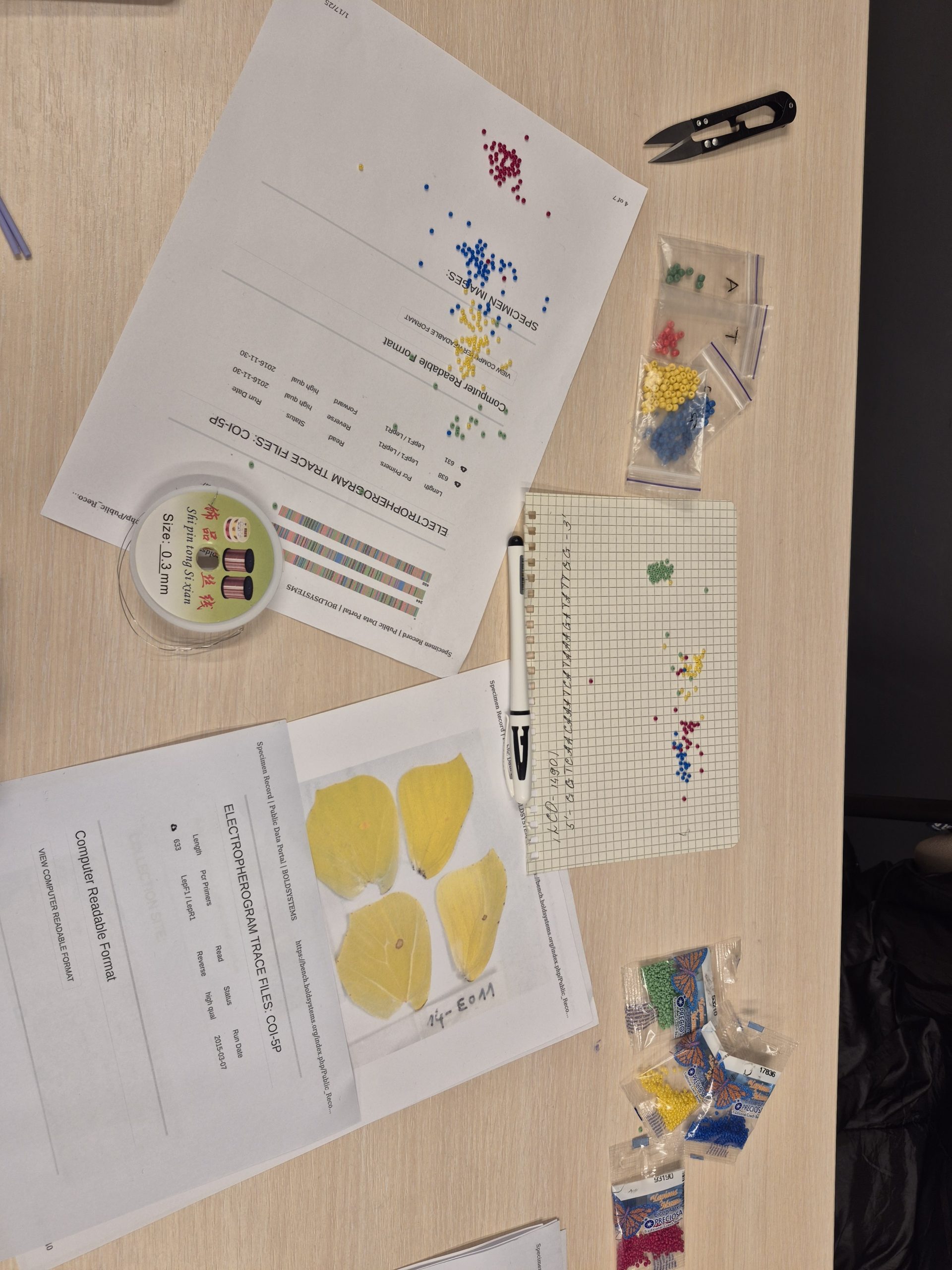Barcoding of Life – a new microscope for biodiversity research
V. N. Karazin Kharkiv National University, Safe Space (Ukraine)
Oleksandr Zinenko and V. N. Karazin Kharkiv National University BGE team, 18th of January 2025
Last January, the V. N. Karazin Kharkiv National University BGE team organised the “Barcoding of Life – a new microscope for biodiversity research” citizen science event at a safe space at Kharkiv University, Ukraine. A total of 13 school students and their biology teachers from local schools in Kharkiv took part in the workshop. The session explored biodiversity and DNA-based monitoring techniques, the BGE project, and hands-on molecular lab work with arthropod samples.
Overview of the event
A one-day training session was held for students from local schools in Kharkiv (Ukraine) who are interested in biology. The session covered biodiversity and methods for monitoring it by using DNA, along with an introduction to the BGE project. Participants also gained hands-on experience in a molecular laboratory, including working with arthropod samples.
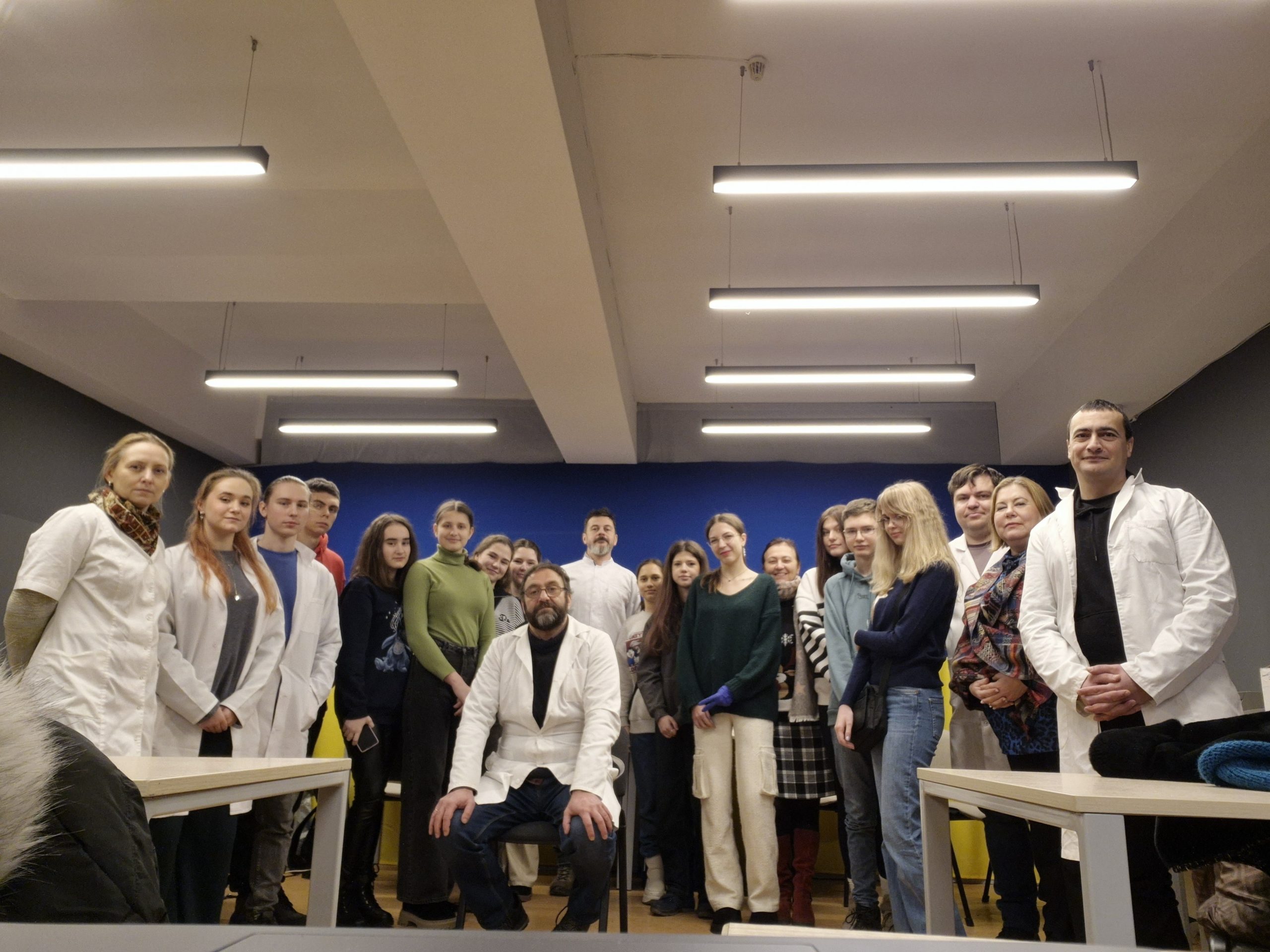
Participants at the “Barcoding of Life – a new microscope for biodiversity research” citizen science event. Photo by: BGE
Goals
Communicate, engage, and promote DNA-based biodiversity research, present BGE and its activities, educate about methods, and advertise biology as a profession.
Content
It was a one-day event where participants devoted the whole day to various activities and workshops. They were presented with lectures about DNA barcoding and its applications, biodiversity, Dark taxa, etc. Then, after a short introduction, various activities were proposed, which usually cover the whole workflow of the barcode generation: separate stations provided hands-on experience in the basics of genetics, databases, arthropod identification and sorting, PCR, electrophoresis and sequencing.
Feedback summary
It was a rare opportunity for the local kids, who are presumably receiving online education, to engage in real-life conversations and gain experience in research work. In general, such events are not common in Kharkiv, where researchers and university staff communicate with a wider audience. The feedback from the event was very positive. Despite the limitations of the safe space in a bomb shelter at Kharkiv University, we feel that the young people and their biology teachers formed the core group of potential future biodiversity professionals eager to try and experience wet lab biology and gain a real understanding of the biodiversity around us.
Header: Snapshot of the “Barcoding of Life – a new microscope for biodiversity research” citizen science event. Images by: BGE


